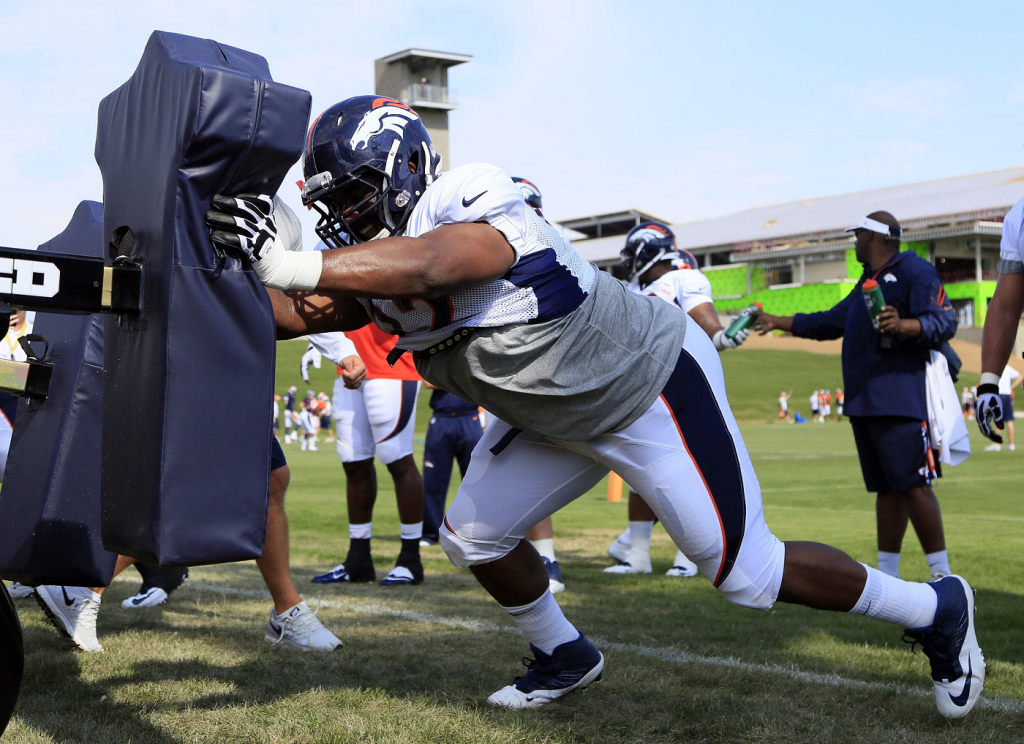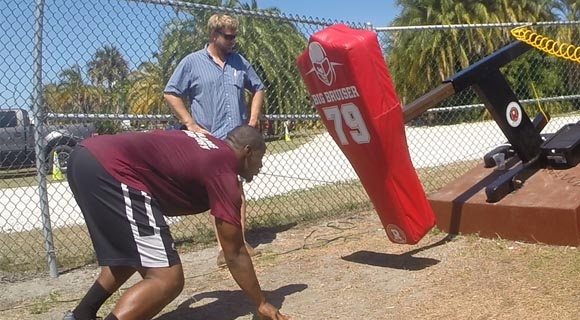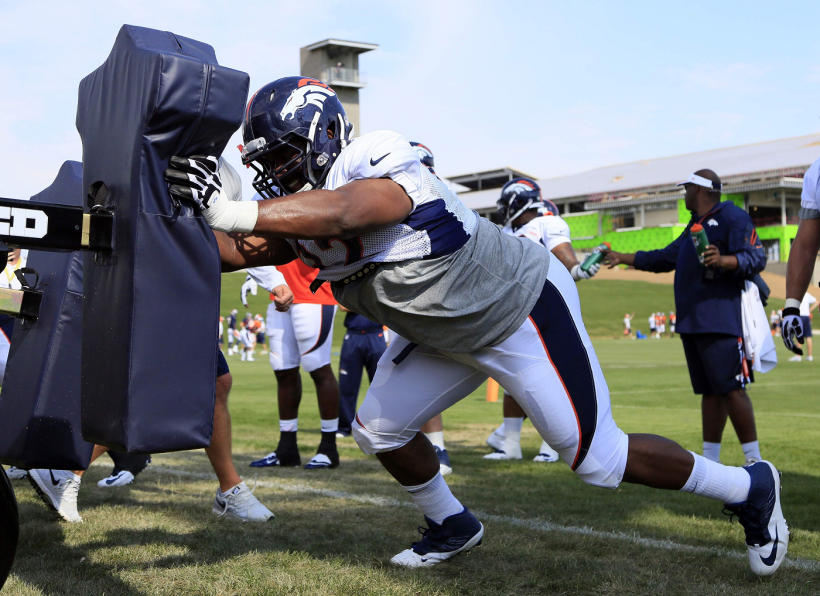
Football blocking sleds (or just football sleds, as they are more commonly known) are pieces of equipment used to create more realistic training for football players at all levels, from youth leagues all the way up to the NFL. Football sleds, although traditionally quite simple in their design, represent a pretty innovative solution to an age-old problem. How do you train athletes to properly prepare them for high-contact situations in very physical sports without injuring those athletes? In 1932, a man named Rae Crowther came up with a solution to this issue in regards to training football players to properly block other players. Mr. Crowther came up with a very simple design, which virtually everyone who has ever seen a football practice/game/movie/etc. is quite familiar with and which remains virtually unchanged today, over 80 years later. Sure the ergonomics have likely changed, stronger/more durable materials have likely been implemented on the frame, better cushioning and more wear-resistant cushion-housing materials have likely been added to keep the players from hurting themselves, and the angle of the blocking body on the sled has likely been optimized for more realistic positioning, but the basic design has not changed in nearly a century. And why should it be changed? Afterall, this piece of equipment has served football players quite well so far, right?
Sure, the equipment performs its function, but why not bring this piece of training equipment into the 21st century? A mechanical engineering senior project team from Florida Tech has done just that: they have implemented modern-age technology and engineering principles into a very simple, partial re-design of the antiquated football sled, and the football team using these sleds is already starting to see the benefits of bringing their equipment up to date.
The students likely began by asking themselves one simple question: how can we improve the performance of today’s football players? Of course the best way to increase the players’ performance is to optimize their training techniques…after all, as the US Navy Fighter Weapons School (TOP GUN) has always said, fight like you train, train like you fight. This means that your training should parallel the real-world circumstances as closely as possible, and how do you ensure that is the case? You evaluate your performance in training in order to see where to improve so you can better prepare yourself for the real deal. In order to help football blockers to do this, these students have added the ability to collect meaningful data to the training equipment. This data can then, in turn, be used to evaluate performance of the players and identify avenues for improvement, leading to more realistic training to better prepare the players for game time. So just how exactly are they collecting this data?

The first thing the team did was to trade out the traditional spring for a pneumatic cylinder with variable internal pressure behind the contact body of the sled. Along with this cylinder, they have also added a light and buzzer to the sled and various sensors to measure key parameters associated with the pneumatic cylinder. With their modifications, the coach may trigger the light/buzzer, which tells the player when to go (by mimicking the hike of the football), at which point the players launch up and into the contact body of the sled and force the body backwards. While this is happening, the team’s sensors are working in the background to collect data on the player’s reaction time, force exerted on the contact body, work done on the body (by measuring the force applied and the stroke/displacement of the piston within the pneumatic cylinder), and power associated with the player’s block (by measuring the rate at which that work is applied). Once collected, this information can then be sent to the coaches’/trainers’ tablet devices to be analyzed on the spot for instant feedback which can be used to make adjustments mid-training, thus allowing for much more meaningful training in terms of performance increases resulting from input time and effort.
This kind of mechanization is quite encouraging to see, especially within the field of athletic training where revolutions do not come very often…after all, in order to get stronger most of us go lift heavy objects, just as our ancient ancestors would have done, haha. The one thing I can say for sure is that this is an excellent example of the logical progression of technology and we can be absolutely sure that we will begin to see more and more advancements such as this one in the years to come, especially in a sport that garners billions of dollars from television viewers alone on a yearly basis.

